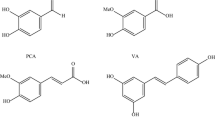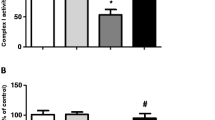Abstract
Pyrroloquinoline quinone (PQQ), which is an essential nutrient, has been shown to act as an antioxidant. Reactive oxygen species (ROS) are thought to be responsible for neurotoxicity caused by the neurotoxin 6-hydroxydopamine (6-OHDA). In this study, we investigated the ability of PQQ to protect against 6-OHDA-induced neurotoxicity using human neuroblastoma SH-SY5Y. When SH-SY5Y cells were exposed to 6-OHDA in the presence of PQQ, PQQ prevented 6-OHDA-induced cell death and DNA fragmentation. Flow cytometry analysis using the ROS-sensitive fluorescence probe, dihydroethidium, revealed that PQQ reduced elevation of 6-OHDA-induced intracellular ROS. In contrast to PQQ, antioxidant vitamins, ascorbic acid and α-tocopherol, had no protective effect. Moreover, we showed that PQQ effectively scavenged superoxide, compared to the antioxidant vitamins. Therefore, our results suggest the protective effect of PQQ on 6-OHDA-induced neurotoxicity is involved, at least in part, in its function as a scavenger of ROS, especially superoxide.





Similar content being viewed by others
References
Gallop PM, Paz MA, Fluckiger R, et al (1989) PQQ, the elusive coenzyme. Trends Biochem Sci 14:343–346
Goodwin PM, Anthony C (1998) The biochemistry, physiology and genetics of PQQ and PQQ-containing enzymes. Adv Microb Physiol 40:1–80
Kumazawa T, Seno H, Urakami T, et al (1992) Trace levels of pyrroloquinoline quinone in human and rat samples detected by gas chromatography/mass spectrometry. Biochim Biophys Acta 1156:62–66
Killgore J, Smidt C, Duich L, et al (1989) Nutritional importance of pyrroloquinoline quinone. Science 245:850–852
Steinberg FM, Gershwin ME, Rucker RB (1994) Dietary pyrroloquinoline quinone: growth and immune response in BALB/c mice. J Nutr 124:744–753
Zhang Y, Rosenberg PA (2002) The essential nutrient pyrroloquinoline quinone may act as a neuroprotectant by suppressing peroxynitrite formation. Eur J Neurosci 16:1015–1024
Zhu BQ, Simonis U, Cecchini G, et al (2006) Comparison of pyrroloquinoline quinone and/or metoprolol on myocardial infarct size and mitochondrial damage in a rat model of ischemia/reperfusion injury. J Cardiovasc Pharmacol Ther 11:119–128
Nishigori H, Yasunaga M, Mizumura M, et al (1989) Preventive effects of pyrroloquinoline quinone on formation of cataract and decline of lenticular and hepatic glutathione of developing chick embryo after glucocorticoid treatment. Life Sci 45:593–598
Jenner P (2003) Oxidative stress in Parkinson’s disease. Ann Neurol 53:S26–S38
Sian J, Dexter DT, Lees AJ, et al (1994) Alterations in glutathione levels in Parkinson’s disease and other neurodegenerative disorders affecting basal ganglia. Ann Neurol 36:348–355
Cohen G, Heikkila RE (1974) The generation of hydrogen peroxide, superoxide radical, and hydroxyl radical by 6-hydroxydopamine, dialuric acid, and related cytotoxic agents. J Biol Chem 249:2447–2452
Graham DG (1978) Oxidative pathways for catecholamines in the genesis of neuromelanin and cytotoxic quinones. Mol Pharmacol 14:633–643
Hastings TG (1995) Enzymatic oxidation of dopamine: the role of prostaglandin H synthase. J Neurochem 64:919–924
Bensadoun JC, Mirochnitchenko O, Inouye M, et al (1998) Attenuation of 6-OHDA-induced neurotoxicity in glutathione peroxidase transgenic mice. Eur J Neurosci 10:3231–3236
Andrew R, Watson DG, Best SA, et al (1993) The determination of hydroxydopamines and other trace amines in the urine of parkinsonian patients and normal controls. Neurochem Res 18:1175–1177
Glinka Y, Gassen M, Youdim MB (1997) Mechanism of 6-hydroxydopamine neurotoxicity. J Neural Transm Suppl 50:55–66
Gassen M, Gross A, Youdim MBH (1998) Apomorphine enantiomers protect cultured pheochromocytoma (PC12) cells from oxidative stress induced by H2O2 and 6-hydroxydopamine. Mov Disord 13:242–248
Soto-Otero R, Mendez-Alvarez E, Hermida-Ameijeiras A, et al (2000) Autoxidation and neurotoxicity of 6-hydroxydopamine in the presence of some antioxidants: potential implication in relation to the pathogenesis of Parkinson’s disease. J Neurochem 74:1605–1612
Hara H, Ohta M, Ohta K, et al (2003) Apomorphine attenuates 6-hydroxydopamine-induced apoptotic cell death in SH-SY5Y cells. Redox Rep 8:193–197
Hara H, Ohta M, Ohta K, et al (2003) Increase of antioxidative potential by tert-butylhydroquinone protects against cell death associated with 6-hydroxydopamine-induced oxidative stress in neuroblastoma SH-SY5Y cells. Brain Res Mol Brain Res 119:125–131
Munoz FJ, Opazo C, Gil-Gomez G, et al (2002) Vitamin E but not 17beta-estradiol protects against vascular toxicity induced by beta-amyloid wild type and the Dutch amyloid variant. J Neurosci 22:3081–3089
Asanuma M, Hirata H, Cadet JL (1998) Attenuation of 6-hydroxydopamine-induced dopaminergic nigrostriatal lesions in superoxide dismutase transgenic mice. Neuroscience 85:907–917
Choi WS, Yoon SY, Oh TH, et al (1999) Two distinct mechanisms are involved in 6-hydroxydopamine- and MPP+-induced dopaminergic neuronal cell death: role of caspases, ROS, and JNK. J Neurosci Res 57:86–94
Barkats M, Millecamps S, Bilang-Bleuel A, et al (2002) Neuronal transfer of the human Cu/Zn superoxide dismutase gene increases the resistance of dopaminergic neurons to 6-hydroxydopamine. J Neurochem 82:101–109
Callio J, Oury TD, Chu CT (2005) Manganese superoxide dismutase protects against 6-hydroxydopamine injury in mouse brains. J Biol Chem 280:18536–18542
He K, Nukada H, Urakami T, et al (2003) Antioxidant and pro-oxidant properties of pyrroloquinoline quinone (PQQ): implications for its function in biological systems. Biochem Pharmacol 65:67–74
Jensen FE, Gardner GJ, Williams AP, et al (1994) The putative essential nutrient pyrroloquinoline quinone is neuroprotective in a rodent model of hypoxic/ischemic brain injury. Neuroscience 62:399–406
Zhang Y, Feustel PJ, Kimelberg HK (2006) Neuroprotection by pyrroloquinoline quinone (PQQ) in reversible middle cerebral artery occlusion in the adult rat. Brain Res 1094:200–206
Otero P, Viana M, Herrera E, et al (1997) Antioxidant and prooxidant effects of ascorbic acid, dehydroascorbic acid and flavonoids on LDL submitted to different degrees of oxidation. Free Radic Res 27:619–626
Choi HY, Song JH, Park DK, et al (2000) The effects of ascorbic acid on dopamine-induced death of PC12 cells are dependent on exposure kinetics. Neurosci Lett 296:81–84
Heikkila RE, Cohen G (1973) 6-Hydroxydopamine: evidence for superoxide radical as an oxidative intermediate. Science 181:456–457
Hamagishi Y, Murata S, Kamei H, et al (1990) New biological properties of pyrroloquinoline quinone and its related compounds: inhibition of chemiluminescence, lipid peroxidation and rat paw edema. J Pharmacol Exp Ther 255:980–985
Misra HS, Khairnar NP, Barik A, et al (2004) Pyrroloquinoline-quinone: a reactive oxygen species scavenger in bacteria. FEBS Lett 578:26–30
Urakami T, Yoshida C, Akaike T, et al (1997) Synthesis of monoesters of pyrroloquinoline quinone and imidazopyrroloquinoline, and radical scavenging activities using electron spin resonance in vitro and pharmacological activity in vivo. J Nutr Sci Vitaminol (Tokyo) 43:19–33
Hara H, Ohta M, Adachi T (2006) Apomorphine protects against 6-hydroxydopamine-induced neuronal cell death through activation of the Nrf2-ARE pathway. J Neurosci Res 84:860–866
Yamaguchi K, Sasano A, Urakami T, et al (1993) Stimulation of nerve growth factor production by pyrroloquinoline quinone and its derivatives in vitro and in vivo. Biosci Biotechnol Biochem 57:1231–1233
Murase K, Hattori A, Kohno M, et al (1993) Stimulation of nerve growth factor synthesis/secretion in mouse astroglial cells by coenzymes. Biochem Mol Biol Int 30:615–621
Aizenman E, Hartnett KA, Zhong C, et al (1992) Interaction of the putative essential nutrient pyrroloquinoline quinone with the N-methyl-d-aspartate receptor redox modulatory site. J Neurosci 12:2362–2369
Naarala J, Nykvist P, Tuomala M, et al (1993) Excitatory amino acid-induced slow biphasic responses of free intracellular calcium in human neuroblastoma cells. FEBS Lett 330:222–226
Sun D, Murali SG (1998) Stimulation of Na+–K+–2Cl– cotransporter in neuronal cells by excitatory neurotransmitter glutamate. Am J Physiol 275:C772–C779
Acknowledgments
This work was supported in part by a Grant-in-Aid for Scientific Research from the Ministry of Education, Culture, Sports, Science and Technology of Japan (HHa).
Author information
Authors and Affiliations
Corresponding author
Rights and permissions
About this article
Cite this article
Hara, H., Hiramatsu, H. & Adachi, T. Pyrroloquinoline Quinone is a Potent Neuroprotective Nutrient Against 6-Hydroxydopamine-Induced Neurotoxicity. Neurochem Res 32, 489–495 (2007). https://doi.org/10.1007/s11064-006-9257-x
Received:
Accepted:
Published:
Issue Date:
DOI: https://doi.org/10.1007/s11064-006-9257-x




